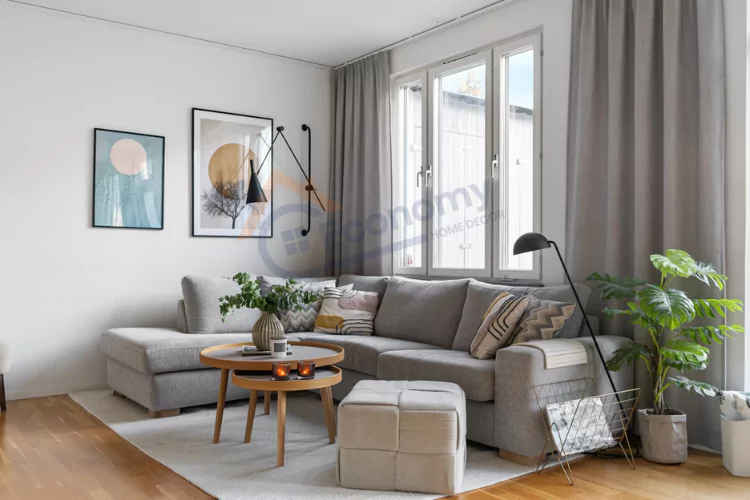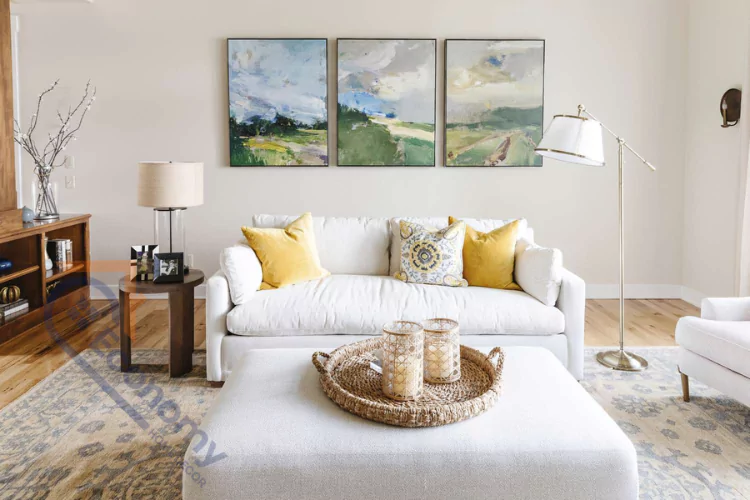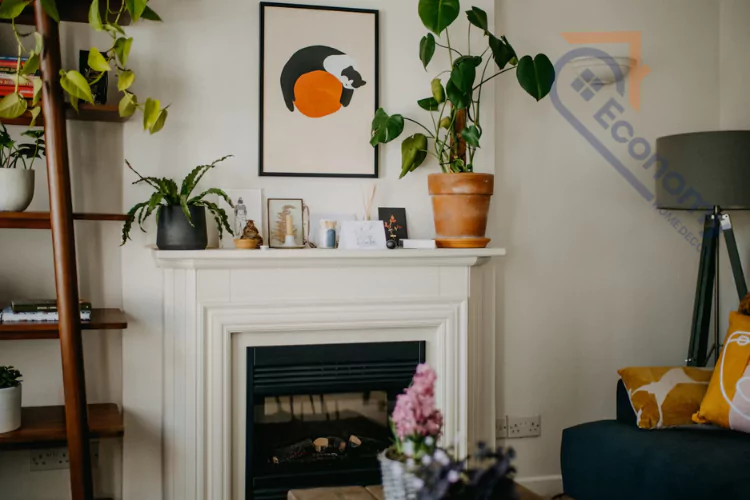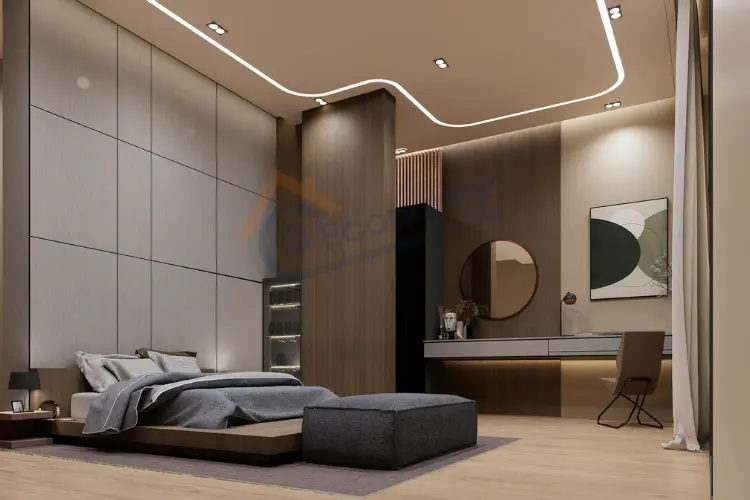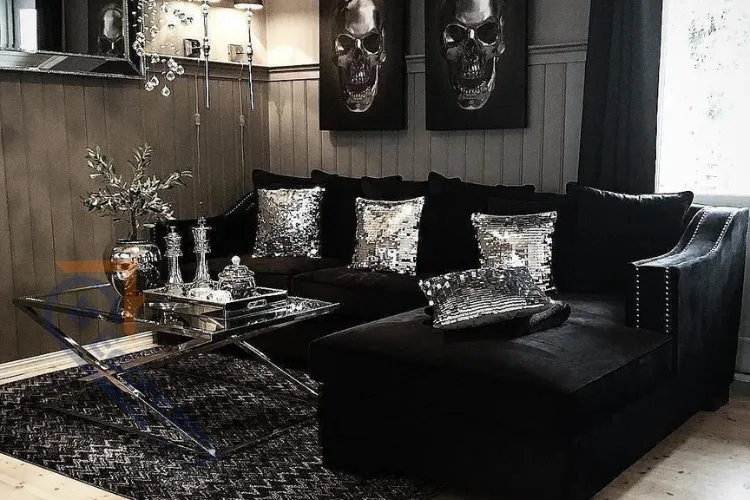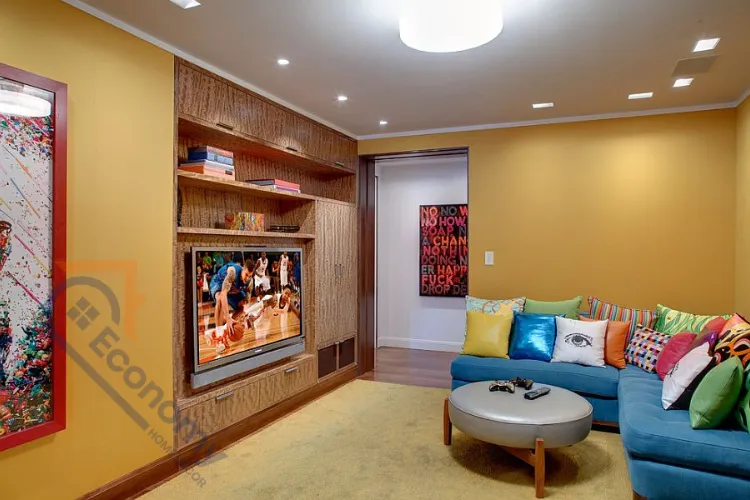Learning how to arrange living room furniture in a rectangular room can transform your space from awkward and cramped to stylish and functional. Rectangular living rooms are among the most common room shapes in American homes, yet they often present unique challenges that leave homeowners scratching their heads. The good news? With the right approach and some creative thinking, you can turn your rectangular space into a welcoming, well-organized living area that maximizes both comfort and style.
Whether you’re working with a narrow rectangle that feels like a bowling alley or a wider rectangular space that seems too spread out, understanding the fundamentals of furniture arrangement will help you create a room that works beautifully for your lifestyle. This comprehensive guide will walk you through everything you need to know about making the most of your rectangular living room.
Rectangular Living Room Layout
Before diving into furniture placement, it’s crucial to understand the unique characteristics of your rectangular space. Rectangular living rooms come in various proportions, from long and narrow to more balanced rectangles, and each presents different opportunities and challenges.
Start by measuring your room carefully, noting not just the length and width, but also the location of windows, doors, built-in features, and any architectural elements like fireplaces or built-in shelving. These fixed elements will significantly impact how to arrange living room furniture in a rectangular room and should guide your planning process.
Consider the room’s natural traffic patterns. Where do people typically enter and exit? How do they move through the space to reach other rooms? Understanding these flow patterns is essential because your furniture arrangement should enhance, not hinder, the natural movement through your living room. Pay attention to the room’s orientation and natural light sources, as these will influence where you’ll want to place seating and entertainment areas.
The Importance of Creating Zones in Your Space
Creating distinct zones within your rectangular living room is one of the most effective strategies for making the space feel organized and purposeful. Rather than pushing all furniture against the walls, think about dividing your rectangle into functional areas that serve different purposes.
A typical rectangular living room can accommodate multiple zones: a conversation area centered around seating, an entertainment zone focused on the TV or media center, a reading nook by a window, or even a small workspace if the room is large enough. The key to successful zoning is ensuring each area feels intentional and connected to the others while maintaining clear pathways between them.
When planning your zones, consider how you and your family actually use the living room. Do you frequently entertain guests? Is movie night a weekly tradition? Do children play in this space? Understanding your lifestyle needs will help you determine which zones are most important and how much space to allocate to each. Remember that zones don’t need physical barriers – they can be defined through furniture placement, area rugs, lighting, or even color schemes.
Choosing the Right Furniture Scale and Proportion
One of the biggest mistakes people make when figuring out how to arrange living room furniture in a rectangular room is choosing pieces that are either too large or too small for the space. Scale and proportion are crucial elements that can make or break your room’s overall harmony.
For rectangular rooms, consider furniture pieces that complement the room’s proportions rather than fighting against them. In a long, narrow rectangle, avoid placing all large furniture pieces along one wall, as this can emphasize the room’s tunnel-like appearance. Instead, use a mix of furniture sizes and consider pieces with lower profiles that won’t overwhelm the space.
Large rectangular rooms benefit from substantial furniture pieces that can anchor different zones without getting lost in the space. Don’t be afraid to use a large sectional sofa or an oversized coffee table if your room can accommodate it. Conversely, in smaller rectangular spaces, choose furniture with clean lines and lighter visual weight. Consider pieces with legs that allow you to see underneath, creating a sense of openness and flow.
Strategic Sofa and Seating Placement Techniques
The sofa is typically the largest and most important piece in your living room, so its placement sets the tone for everything else. In rectangular rooms, you have several strategic options for sofa placement that can dramatically impact the room’s functionality and visual appeal.
Parallel placement works well in wider rectangular rooms where you can place the sofa parallel to the longer wall, creating a natural conversation area. This arrangement works especially well when you have a focal point like a fireplace or large window on the shorter wall. For narrower rectangles, consider placing the sofa perpendicular to the longer wall, which can help break up the length and create a more intimate seating area.
Floating furniture arrangements can be particularly effective in rectangular rooms. Instead of pushing your sofa against a wall, try floating it in the middle of the room with a console table behind it. This technique creates defined zones and can make your rectangular room feel more like a series of connected spaces rather than one long corridor. Add accent chairs positioned at angles to create a dynamic conversation area that encourages interaction and makes the space feel more welcoming.
Coffee Table and Side Table Positioning
The placement of coffee tables and side tables plays a crucial supporting role in your furniture arrangement. These pieces should be both functional and aesthetically pleasing while maintaining proper proportions within your rectangular space.
For coffee tables in rectangular rooms, consider the scale carefully. A long, narrow coffee table can complement a rectangular room’s proportions while providing ample surface space. Alternatively, two smaller coffee tables or even a collection of nesting tables can offer flexibility and visual interest. Position your coffee table approximately 14-18 inches from seating to ensure easy access without making the space feel cramped.
Side tables should be placed thoughtfully to provide convenient surfaces for lamps, drinks, and personal items. In rectangular arrangements, consider using side tables of varying heights to add visual rhythm and prevent the space from feeling too uniform. End tables beside sofas and chairs should be roughly the same height as the arm of the seating for optimal functionality and visual balance.
Television and Entertainment Center Arrangement
Modern living rooms often revolve around entertainment, making TV placement a critical consideration when learning how to arrange living room furniture in a rectangular room. The key is creating a layout that allows comfortable viewing from multiple seating positions while maintaining good traffic flow.
In most rectangular rooms, the TV works best mounted on or positioned against one of the shorter walls. This placement allows for optimal viewing distances and prevents the common mistake of creating a narrow “bowling alley” effect. Consider the height carefully – the center of your TV screen should be at eye level when you’re seated in your primary viewing position.
Entertainment centers and media consoles should complement your room’s proportions. In longer rectangular rooms, avoid placing a small TV console against a long wall, as it can look lost and insignificant. Instead, consider a larger entertainment center or add flanking elements like tall plants or decorative objects to create visual balance. If your rectangular room is particularly long, you might even consider placing the entertainment area at one end of the room, creating a dedicated media zone.
Lighting Solutions for Rectangular Spaces
Proper lighting is essential for making any rectangular living room feel warm, inviting, and well-proportioned. A single overhead light in the center of a rectangular room often creates harsh shadows and fails to illuminate the space evenly.
Layered lighting approaches work best in rectangular spaces. Combine ambient lighting (overhead fixtures), task lighting (reading lamps, table lamps), and accent lighting (wall sconces, decorative lamps) to create a well-lit environment that enhances your furniture arrangement. Consider placing floor lamps in corners to eliminate dark spots and make the room feel more expansive.
Table lamps on side tables and console tables add warmth and intimacy to seating areas while providing functional light for reading or other activities. In longer rectangular rooms, consider using multiple light sources at different points along the room’s length to create visual interest and prevent any single area from feeling too dark or isolated. Dimmer switches can add flexibility, allowing you to adjust the lighting to suit different activities and times of day.
Window Treatment and Natural Light Optimization
Windows play a significant role in how your rectangular living room feels and functions. The way you treat windows and work with natural light can dramatically impact the success of your furniture arrangement.
In rectangular rooms with windows on the shorter walls, you have an opportunity to create beautiful focal points that can anchor your furniture groupings. Consider placing seating arrangements to take advantage of natural light while being mindful of glare issues, especially if you’ll be watching TV or working in the space.
Window treatments should complement your room’s proportions. In rooms with low ceilings, hang curtains closer to the ceiling line to create the illusion of height. For narrow rectangular rooms, wide window treatments can help make the space feel broader. Consider the scale of your window treatments in relation to your furniture – oversized patterns or treatments might overwhelm smaller rectangular spaces, while tiny treatments can get lost in larger rooms.
Area Rugs and Floor Space Definition
Area rugs are powerful tools for defining spaces and creating visual cohesion in rectangular living rooms. The right rug can anchor your furniture arrangement, define conversation areas, and help break up long expanses of flooring.
When selecting rugs for rectangular rooms, size matters tremendously. A common mistake is choosing rugs that are too small, which can make furniture groupings look disconnected and the room feel fragmented. In most rectangular living room arrangements, your area rug should be large enough to anchor all the main seating pieces – ideally, at least the front legs of sofas and chairs should rest on the rug.
Multiple rugs can work effectively in longer rectangular rooms to define different zones. For example, you might use one rug to anchor a conversation area and another to define a reading nook or workspace. When using multiple rugs, ensure they complement each other in color, pattern, or texture to maintain visual cohesion throughout the space.
Storage Solutions and Built-in Features
Smart storage solutions are essential in any living room, but they’re particularly important in rectangular spaces where you want to maximize functionality without creating clutter or blocking traffic flow.
Built-in features like bookshelves, entertainment centers, or window seats can be incredibly valuable in rectangular rooms. These elements provide storage while taking up minimal floor space, helping maintain clean lines and good traffic flow. If your rectangular room lacks built-ins, consider furniture pieces that offer hidden storage, such as ottomans with interior compartments or coffee tables with drawers.
Vertical storage solutions work particularly well in rectangular rooms. Tall bookcases or shelving units can add height and visual interest while providing ample storage. Position these pieces strategically to help break up long walls and create visual anchors for your furniture arrangements. Remember that storage pieces can also serve as room dividers in larger rectangular spaces, helping to define different zones without blocking light or creating a cramped feeling.
Color Schemes and Visual Flow
The colors you choose for your rectangular living room can significantly impact how the space feels and how successful your furniture arrangement appears. Color can be used strategically to enhance your room’s proportions and create visual harmony throughout the space.
In longer, narrower rectangular rooms, consider using darker colors on the shorter walls to visually bring them forward, making the space feel more balanced. Lighter colors on longer walls can help them recede, reducing the tunnel-like effect that sometimes plagues rectangular spaces. However, don’t feel limited to this approach – bold accent walls can create dramatic focal points that anchor furniture groupings beautifully.
Color repetition throughout the space helps create visual flow and cohesion. Pick up accent colors from your sofa pillows in artwork, repeat rug colors in curtains, or echo wall colors in decorative accessories. This repetition helps tie together different zones within your rectangular room and makes the furniture arrangement feel intentional and well-planned. Neutral base colors with carefully chosen accent colors often work best in rectangular spaces, providing flexibility as you refine your furniture arrangement over time.
Common Mistakes to Avoid
Learning how to arrange living room furniture in a rectangular room involves understanding what doesn’t work as much as what does. One of the most common mistakes is pushing all furniture against the walls, which can make rectangular rooms feel like they have a big empty space in the middle with unused perimeter seating.
Another frequent error is failing to consider scale and proportion. Placing tiny furniture in a large rectangular room makes the space feel incomplete, while cramming oversized pieces into a small rectangular space creates a cluttered, uncomfortable environment. Always measure your space and your furniture before committing to an arrangement.
Traffic flow problems are particularly common in rectangular rooms. Avoid creating obstacles that force people to walk around furniture to reach different areas of the room. Your furniture arrangement should enhance natural pathways, not create new barriers. Finally, don’t neglect the importance of creating conversation areas – arrangements that make it difficult for people to face each other while talking will make your living room feel unwelcoming and awkward.
Seasonal Arrangement Adjustments
One advantage of understanding how to arrange living room furniture in a rectangular room is the flexibility it gives you to make seasonal adjustments that keep your space feeling fresh and functional year-round.
During winter months, you might want to arrange seating closer together to create a cozier, more intimate atmosphere. Consider moving chairs closer to a fireplace if you have one, or creating a tighter conversation area that feels warm and inviting during cold weather. Summer arrangements might emphasize airflow and natural light, with furniture positioned to take advantage of cross-breezes and scenic views.
Seasonal decor changes can also influence your furniture arrangement. Holiday decorations might require temporarily moving certain pieces to accommodate a Christmas tree or create space for entertaining. Spring cleaning presents an excellent opportunity to reassess your arrangement and try new configurations. Flexibility in your approach allows you to adapt your rectangular living room to changing needs and preferences throughout the year.
Perfect Rectangular Room Arrangements
| Principle | Application | Benefits |
|---|---|---|
| Zone Creation | Divide space into functional areas | Maximizes utility and organization |
| Proper Scale | Choose furniture proportional to room size | Creates visual harmony and balance |
| Traffic Flow | Maintain clear pathways between areas | Ensures comfortable room navigation |
| Lighting Layers | Combine ambient, task, and accent lighting | Enhances atmosphere and functionality |
| Strategic Placement | Position key pieces to anchor zones | Creates focal points and visual interest |
Understanding how to arrange living room furniture in a rectangular room is ultimately about creating a space that works for your lifestyle while looking great. Remember that there’s no single “correct” arrangement – the best layout is one that meets your specific needs and preferences.
The key principles we’ve covered – from creating zones and choosing appropriate scale to optimizing lighting and traffic flow – provide a framework for making decisions about your space. Experimentation is encouraged – don’t be afraid to try different arrangements until you find one that feels right.
Most importantly, remember that your living room should reflect your personality and support the way you actually live. Whether that means prioritizing conversation areas for entertaining, creating a media-focused layout for family movie nights, or designing flexible zones that can adapt to different activities, the best furniture arrangement is one that makes your rectangular living room a place where you love to spend time.

